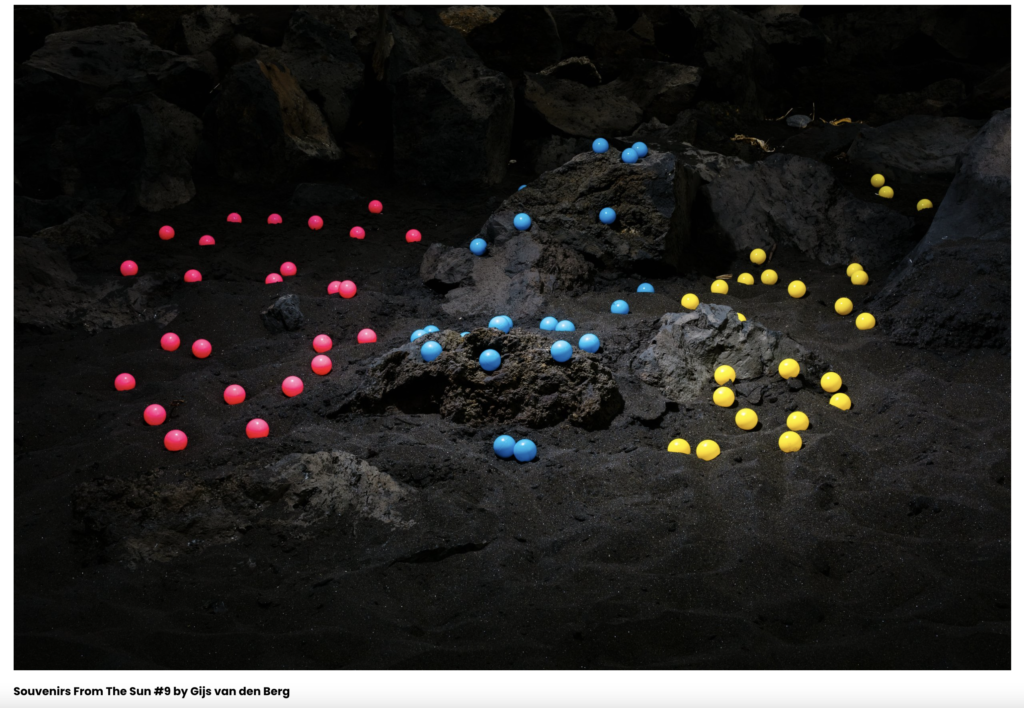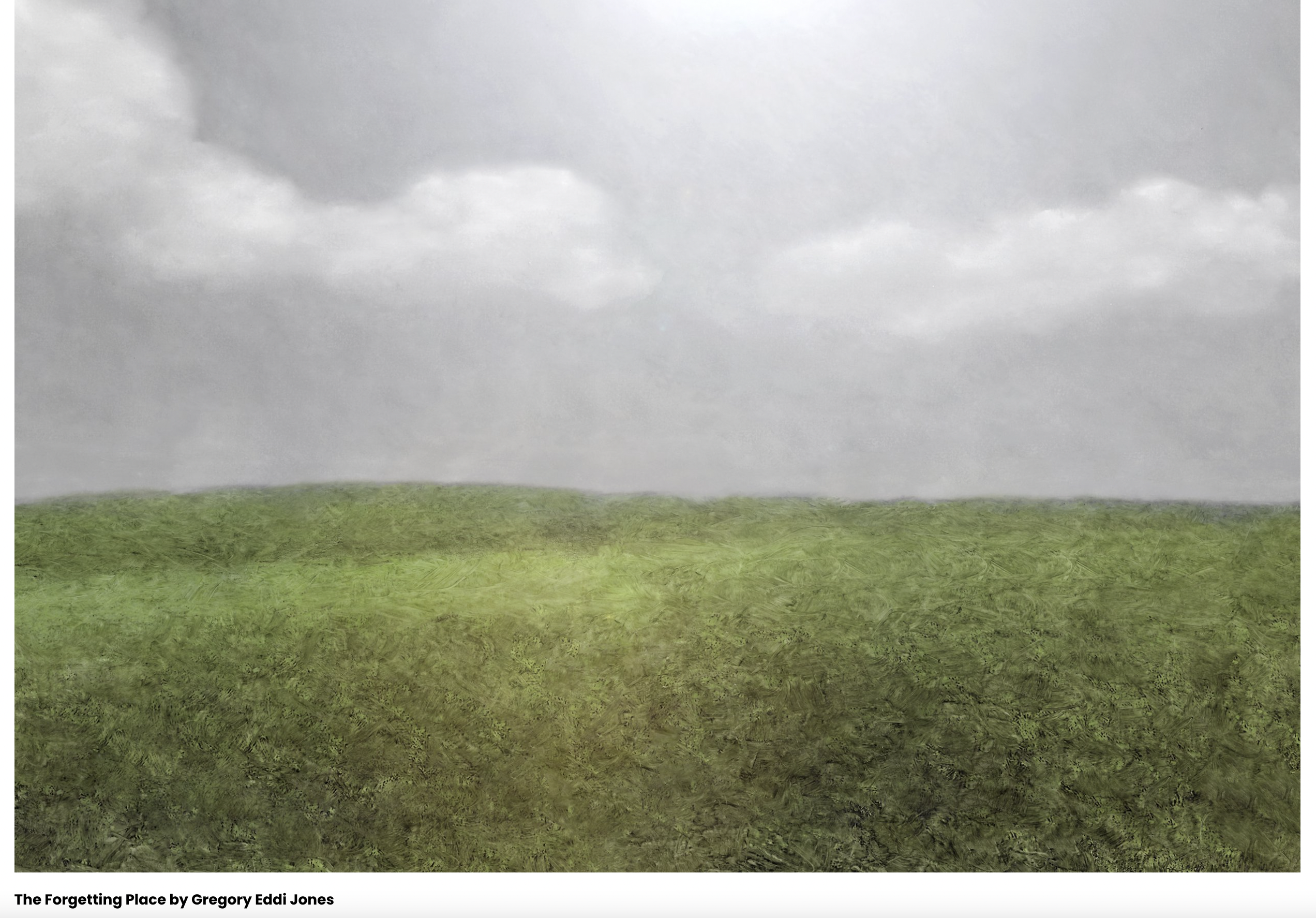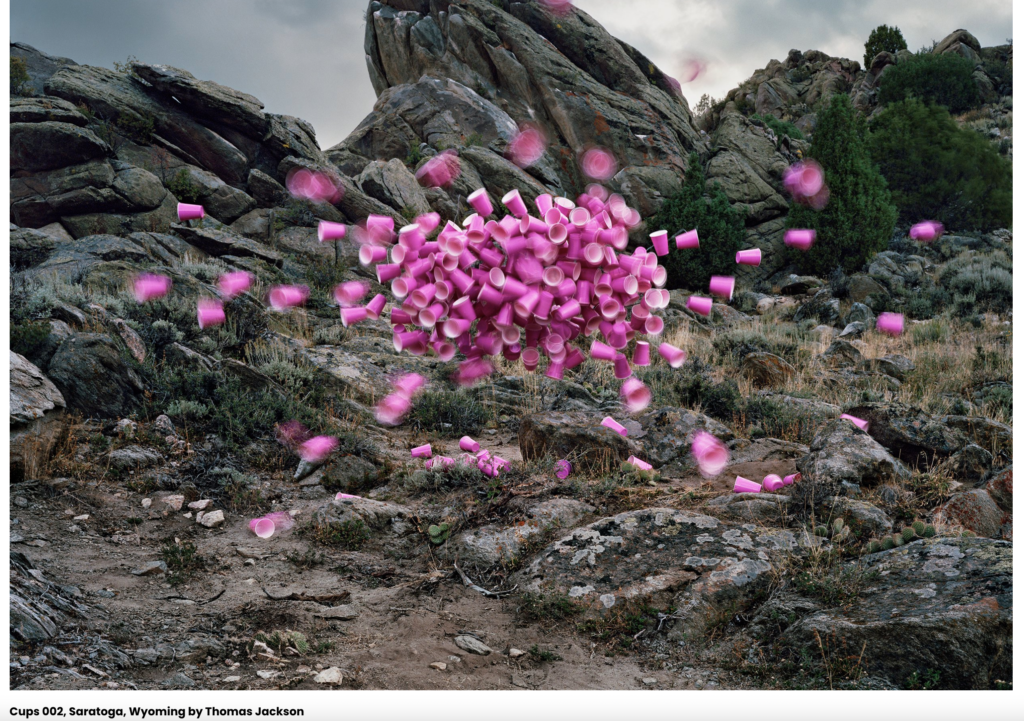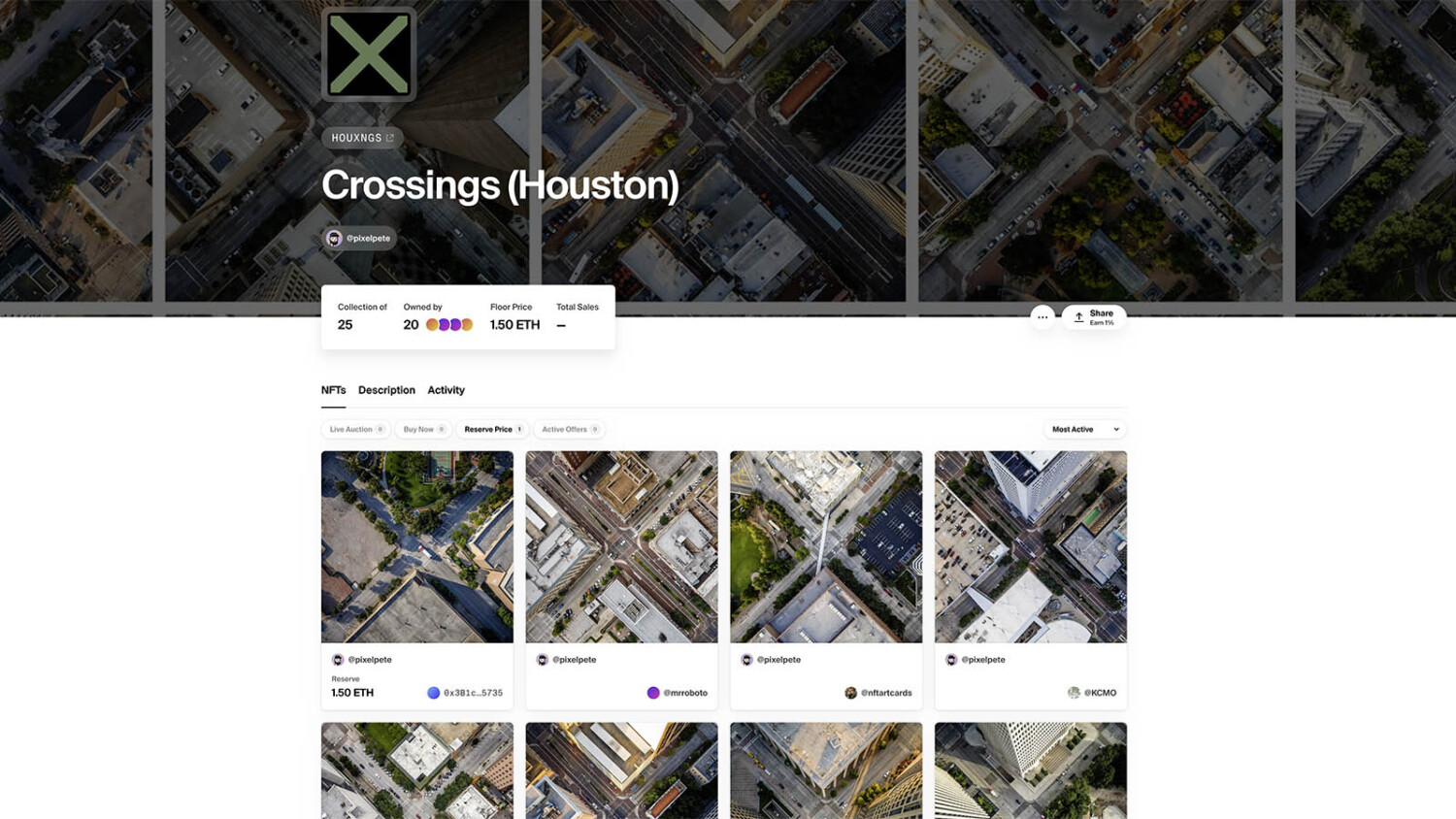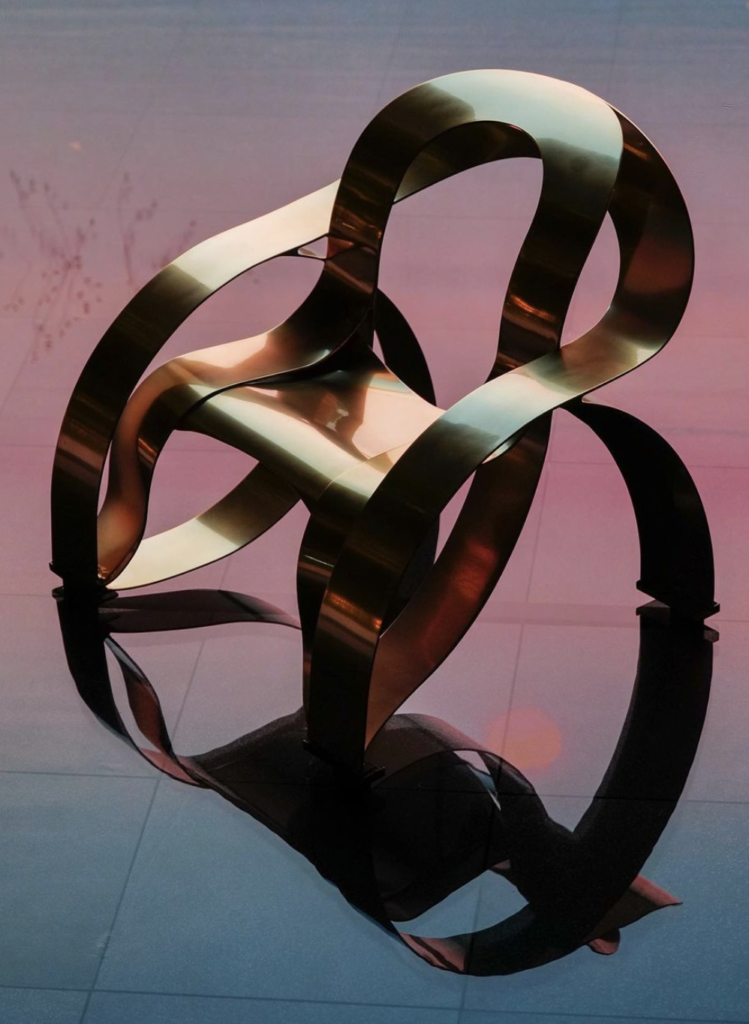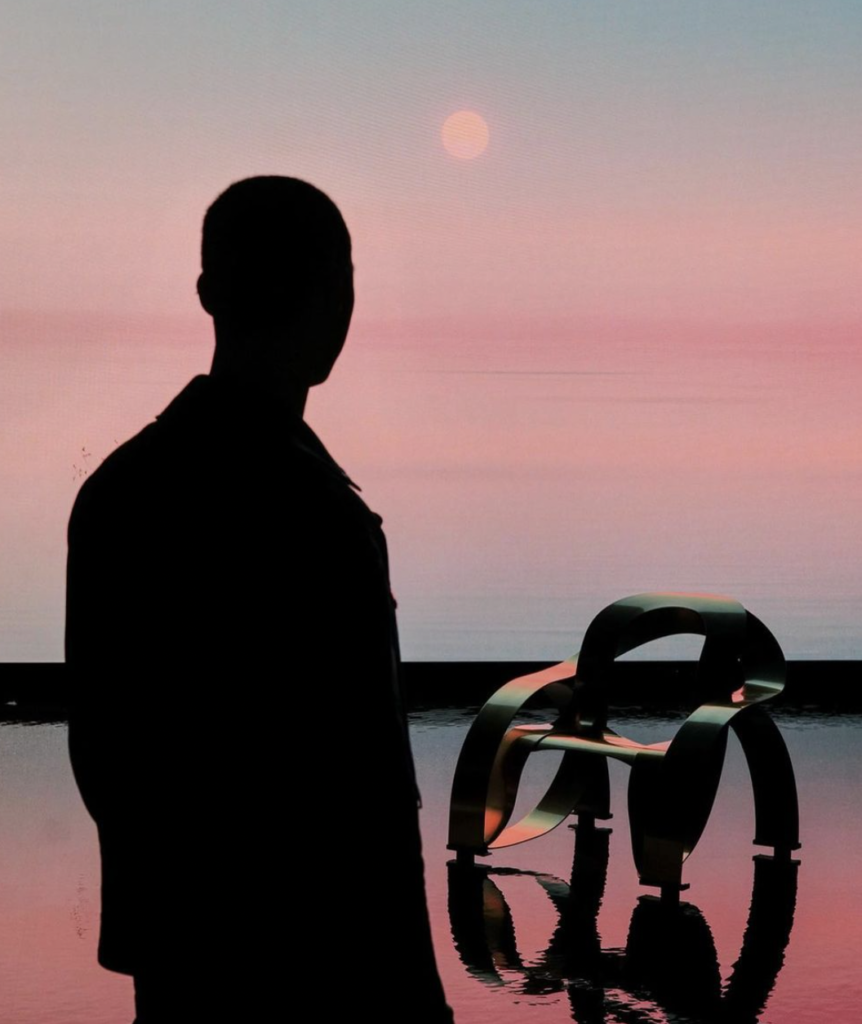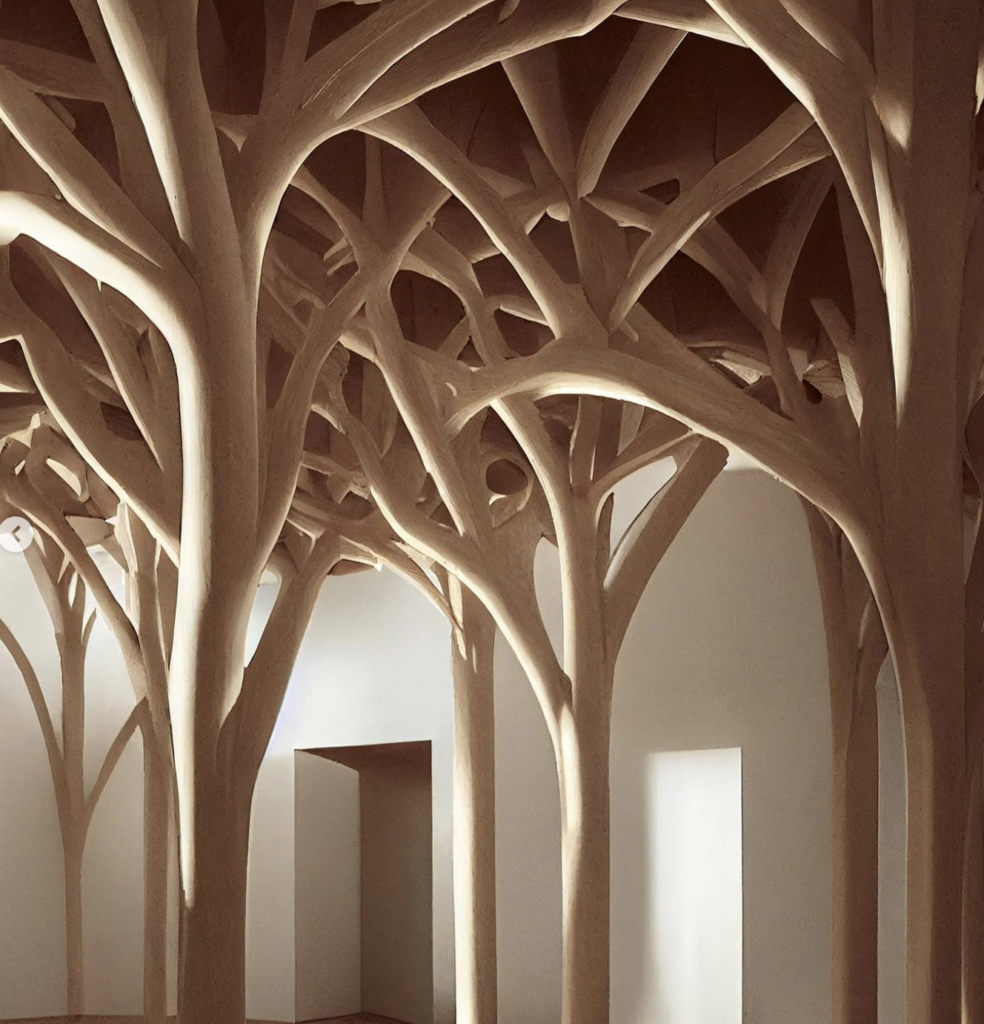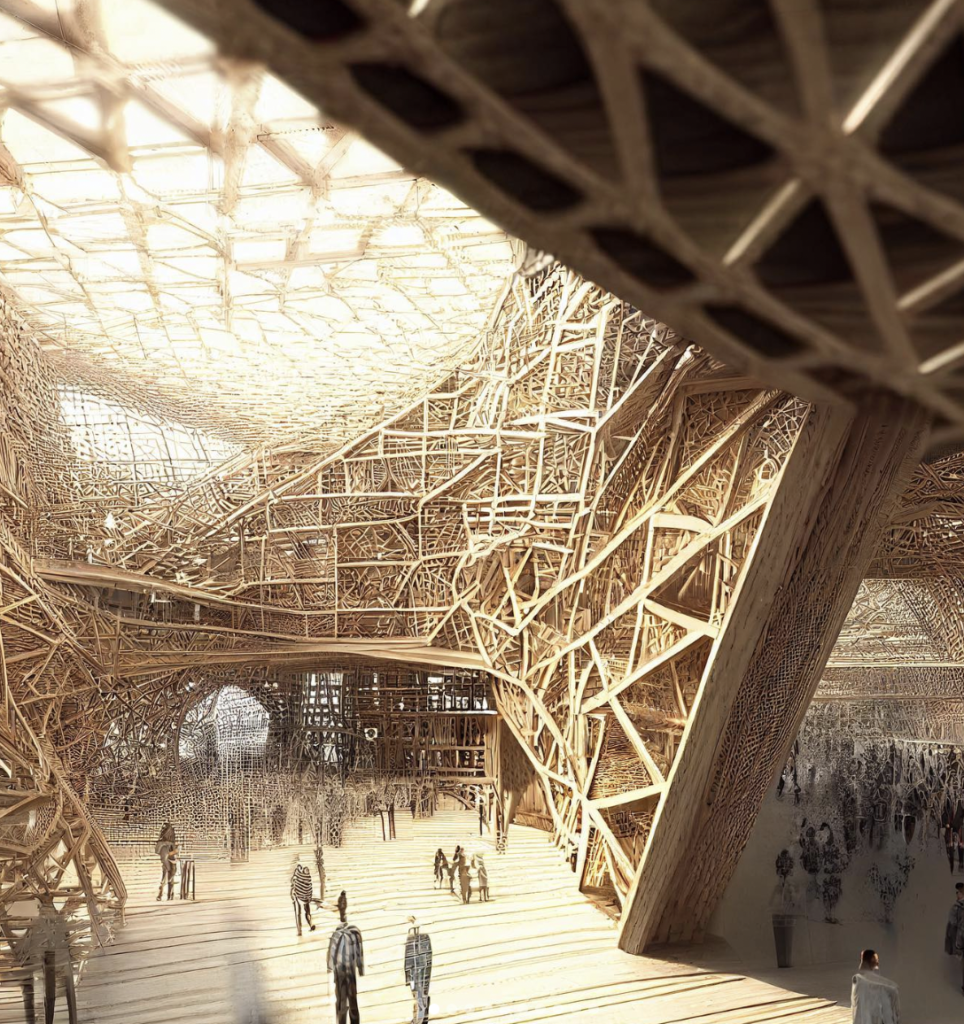Architectural Photography and NFTs – a Revised, Bold New World With Intention
In the summer of 2022, a lot of buzz and hype was created around AI visual generator tools that would allow enthusiasts to create images simply by describing them with keywords. Artificial intelligence research firm OpenAI conducted a wide-scale beta test of DALL-E, a cutting-edge software that creates images from textual descriptions (APA writer Kyrre Sundal shows a great example of its functionality here).
Before my architectural photographer friends groan about yet another article about AI in our coveted photography field, I urge you to push aside your cynicism to hear me out for a few more minutes and see where I’m going with this!
While I am always appreciative of original digital art in our field, especially 3D visualization and realistic renderings as they may be used as a foundation for architects and interior designers, I didn’t delve too much into any of this before until prior to this summer, when AD Middle East featured one of the works of Andres Reisinger – a sought-after digital artist who showcases surreal, minimalist digital spaces with unique elements immersed in sublime lighting that leave you doing second or third takes on a visual image.
Andres was exhibiting his debut collection of commissioned art by Gallery Collectional, a Dubai-based gallery with some pretty nifty, futuristic, albeit bespoke design pieces in their portfolio. The specific installation piece in question consisted of a physical counterpart transcended from its digital form, accompanied by its complementary digital piece – both pieces essentially united together in the metaverse/real realm, forever, thanks to this installation.

Image Credit: Andres Reisinger 
Image Credit: Andres Reisinger
A follow-up on Andres’ IG account shows he has delved further into new terrains with more metaverse, architectural projects through the medium of NFTs.
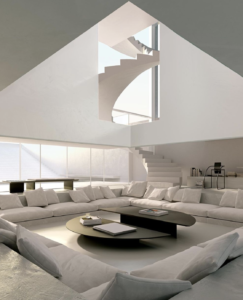
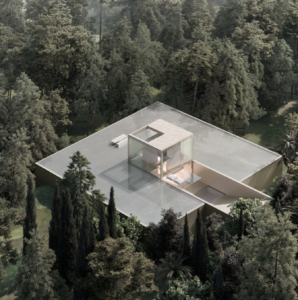
And of course, this then led me down the rabbit hole of the endless possibilities that we as architectural photographers can pursue, or are already pursuing, to increase our revenue stream (besides shooting, retouching, and licensing!) – through the world of NFTs!
I decided to ask our AP Almanac friend Peter Molick, architectural photographer extraordinaire and NFT advocate for photography’s growing momentum in the NFT space, to hopefully get a little more insight as to how this may or may not impact the digital scene in the architectural world, and ultimately if it will, at all, transcend into the physical realm of architectural photography.
If you are not already familiar with Peter, you can get to know a bit more about him and his photography workflow in our past APALMANAC interview, and this brief article on his introductory NFT blog post. Peter also delves deeper into digital art curation and collection of NFTs specifically more at his website for displaying his photography collection, PixelPete.Gallery.
Ruksana: Hi Peter, thanks for agreeing to speak with me regarding this topic – which I’ve decided in a nutshell, is about how architectural photographers can create NFT’s as a possible revenue stream for projects that may not always make it to the editorial/published realm in the physical space. This could be personal projects, or even past client-commissioned ones once licensing terms have expired (to name one example).
Ruksana: As a buyer and a seller of lens-based AND digital art, what are your thoughts on the recent AI Image generators and their broader implications on architectural photography being replaced by digital AI, at least in the “creative metaverse” right now? (For example, the Andres Reisinger show/installation is in the creative metaverse, so to speak). As an optimist, I reckon rather than thinking the worst of the situation (being replaced by AI), I feel we can consider it as a supplementary tool to further digitize the existing portfolio in hand for variety and to push cutting-edge projects in the open, as has been traditionally done with digital renderings. Why do you think we have all this negativity suddenly from a digital mechanism that has always existed, but now has been upgraded to AI level, so to speak?
Peter: Personally I don’t see AI image generators as a threat to architectural photographers, as I think there will always be a need for accurate representation of the built environment from an editorial lens. Rather, I see an opportunity from the design side of things for architects and visualizers to take advantage of these emergent tools as ways to quickly study possible solutions in a much more efficient time frame than otherwise possible with the added benefit of organic discoveries being made along the way. For example, architect and professor of architecture Andrew Kudless has been doing some fascinating explorations of AI as a design tool via his Instagram account.

Image credit: Andrew Kudless 
Image credit: Andrew Kudless
From the photographer’s point of view, I do think there are some interesting possibilities for those willing to explore the capabilities of these text to IA programs to possibly insert visual interventions into their photography – though I think this largely exists more from the lens of those working on personal projects vs. client work. Some examples of photographers (non-architectural) creating work that explores AI as a creative tool, would be Anna Condo, who has created a number of typological collections using text to imaging within the bounds of her aesthetic curiosities to some interesting ends; and Claudia Pawlak, who recently created a project that utilized machine learning to recreate imagined cyanotypes inspired by Anna Atkins. As far as the negativity goes, I think people are generally averse to change and going into the unknown, and this creates fear. Some will embrace the possibilities of advanced technologies and some will shy away from it. Neither is wrong, but the fact that technology will impact the way we produce things in the future is undeniable so I choose to embrace it and have fun along the way.
Ruksana: I understand from your introductory article that there is a primary transaction fee incurred on the digital platform for reaching collectors, and then there exists a secondary market with varying royalty percentages for the NFTs (since users have the right to buy, sell or transfer work on these platforms). From your website(s), I’ve noticed that you have sold individual NFTs (your Crossings series) and also possess a curated collection of digital and lens-based NFTs that you own. These are quite varied in terms of subject matter, but interesting nevertheless. Are you able to talk to us about your experiences/progress in this realm from early 2022 to current news? Where are you now with this? Would you say you have had similar success with regards to royalties from NFTs, as you’ve had with licensing from client-commissions from photoshoots, and if so, can we translate this somehow within our role as architectural photographers possessing another stream of revenue (since we have all the content anyways?!… and also taking into consideration that a resold NFT generates profit to the original creator). What are some of the factors that you have found to be a roadblock for this process, speaking as an advocate in this space who possibly has seen such cases?
Peter: Of course, I’m happy to speak about my experiences. I have been involved with NFTs to some degree since 2018, but much more steadily since late 2020 when the market really started coming into some larger focus. During that time, we experienced some major ups and downs. One of the interesting things about the commoditization of digital goods is the broad range of people that will get involved with various motivations – art collectors, speculative traders, traditional investors, venture capitalists – you name it. This combined with relatively new technology has made for some major shifts in activity and pricing, making it a very frustrating place for many to get their footing in, should they decide there is interest. One of the most gratifying things from my experiences has been the discovery of new mediums of art as well as a nearly constant source of discourse on art, technology, community, and more. Though I’ve been involved in the arts for a long time on some level, I’ve never had such concentrated amounts of discussion on artists’ processes, voices, and experiences as I have in this short time.
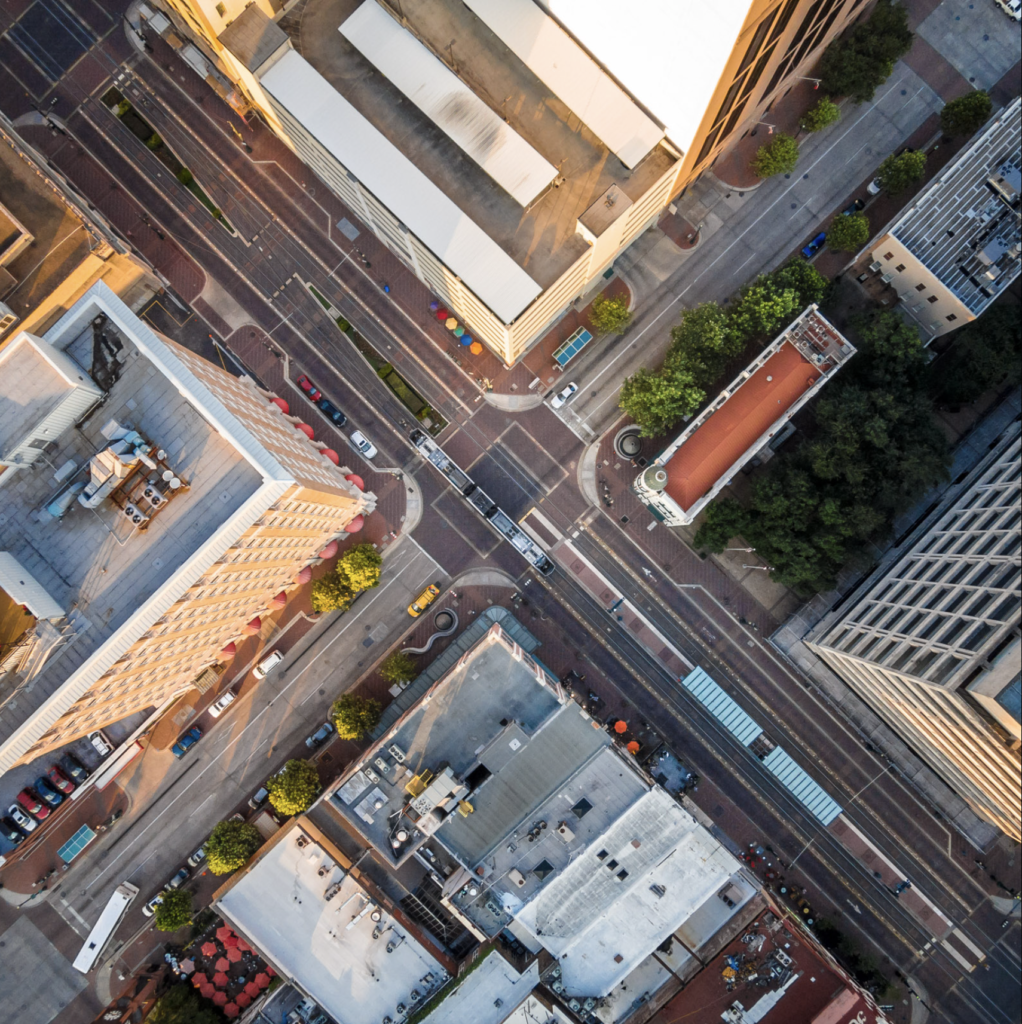
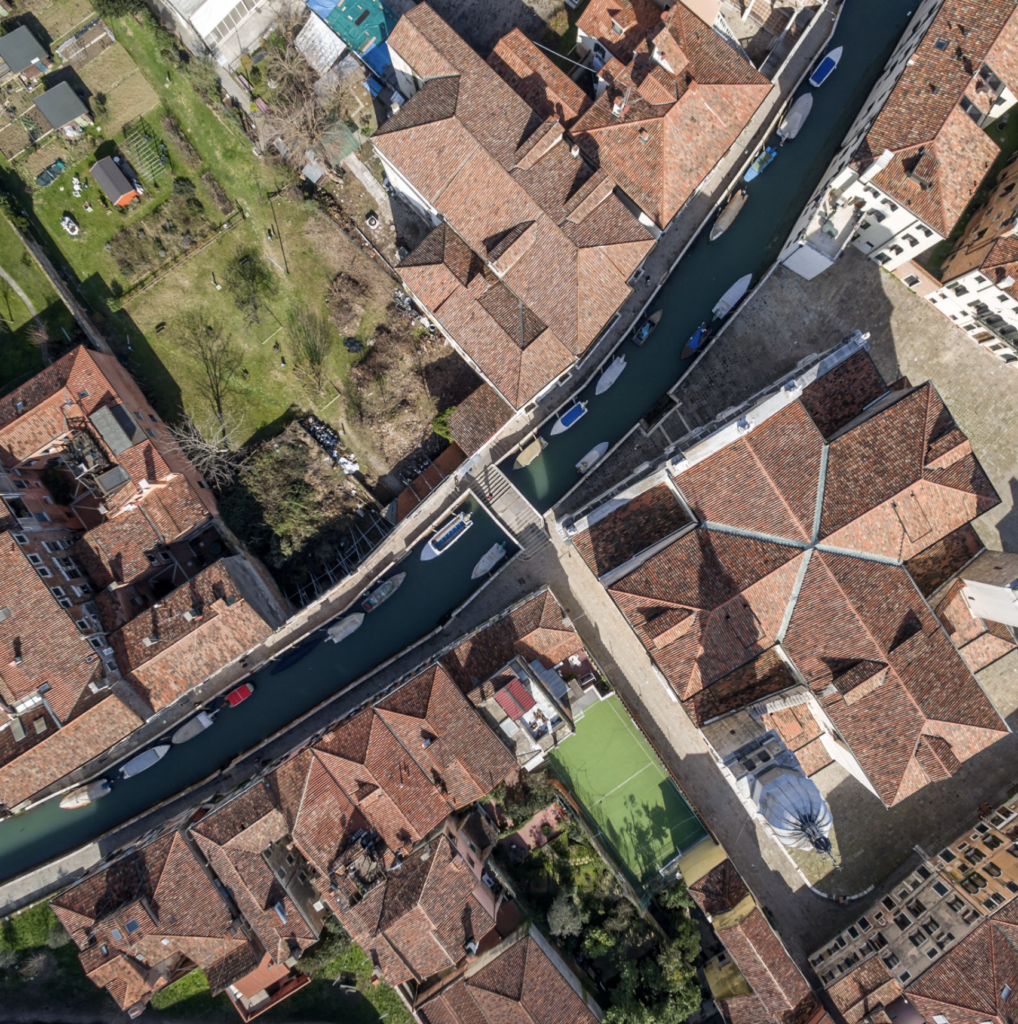
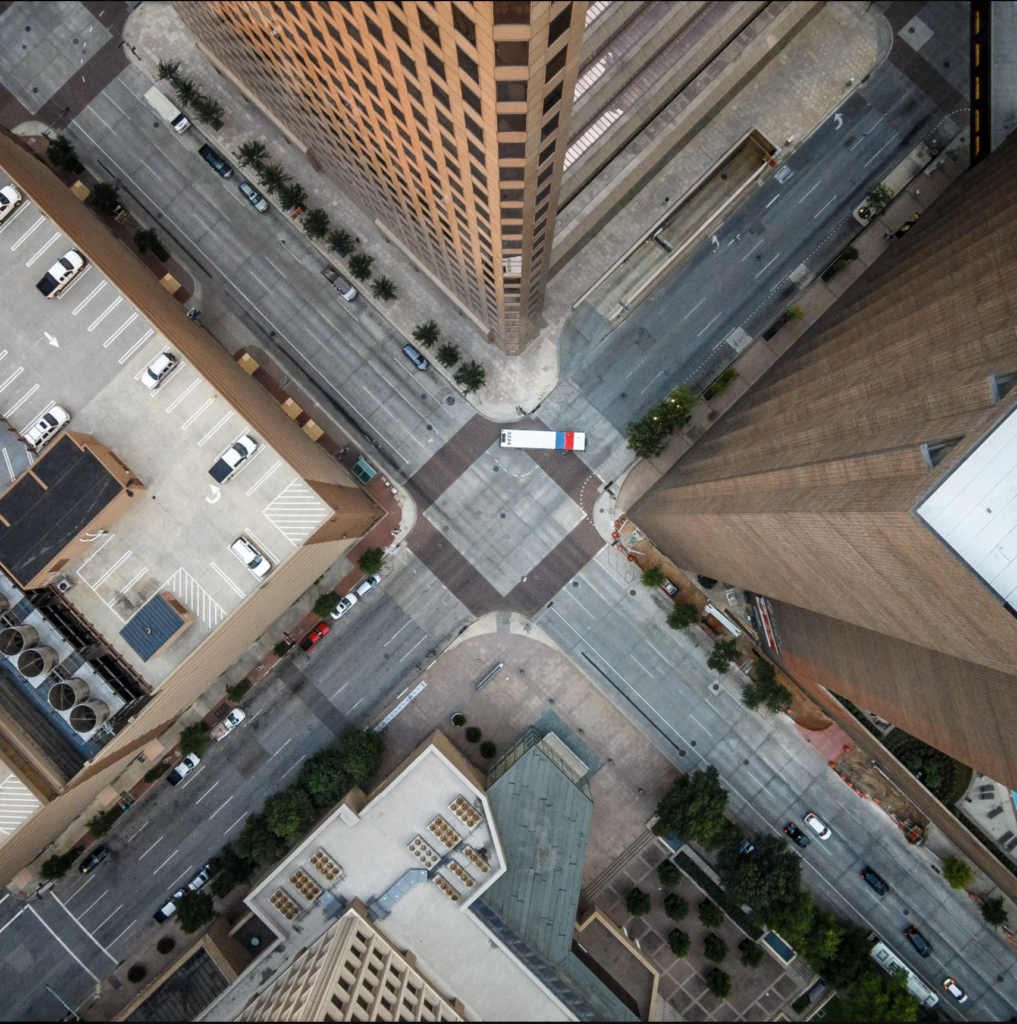
https://www.petermolick.com/crossings
Though I did sell my Crossings series’ as NFTs, my experience has largely been much more focused on that of a collector, which is thanks to having been earlier enough to be able to support artists on a fairly impactful scale. For photography, I think that currently, the biggest financial benefit to selling your work is on the primary sales, where you retain the large majority of the sale (for example Foundation takes a 5% fee from the primary sale, meaning the artists retain 95% of that). The secondary royalty fees are one of the great promises of the space, but is something that still needs work long term. That said, a standard royalty fee on secondary sales is 10% to the artist. Photography NFTs aren’t seeing a ton of secondary sales yet, which is largely due to the limited pool of people collecting them in what is already a niche space overall. I think that this is just a matter of time, but is slower than other types of NFTs because of the depth and human nature of photography and its subjects and that being intimidating for many who came to collect from outside of the arts.
Speaking more to the possibilities that NFTs could hold for us as photographers and our copyrights and licensing, I think there are huge implications that Smart Contracts (the underlying framework that makes NFTs possible) can have on the future of our industry. Smart Contracts allow for programmable contract terms that could greatly streamline many of the grey areas of traditional contracts and distribution. This also holds true for the construction industry at large, which is notorious for having complex contracts with a variety of milestones that have to be met in order for money to be released to proceed on to its next phase. Smart Contracts have the possibility to completely disrupt this, but think that anything like that is many years down the line.
Ruksana: One thing that possibly would bar arch photographers (or other genres) from this space is the question of ownership rights of the digital work. As we know this is a thorny issue we all deal with as arch photographers already, not to mention the policing work. Since NFTs and digital blockchain (presumably, Peter, tell me if I’m wrong!) obviously do a better job at policing this due to the technology alone, would this in effect not make life *easier* and thus not be a bar? Did I just contradict myself? What I’m trying to say, Peter, should this not give us more of a reason to pursue it? I guess then the issue is, are we getting fairly compensated for our work, as in the traditional world where value for our work is something we assign to ourselves when dealing with our clients, subjectively, while in the NFT world, value is assigned by community engagement within the NFT ecosystem (as in the Bored Ape Yacht Club beginnings).
Peter: I touched on this a bit in the answer above, but definitely think there are possible implications that this over-riding technology can and will have on how we deal with licensing and intellectual property more broadly. IP specifically is a hot topic surrounding all of NFTs. For photography, I can easily see a future where the tracking of usage and creatorship is baked in to the files that we use and distribute via the blockchain, but again I think this is something that is a ways out. Photoshop’s “NFT Generator” tool was a strong signal that Adobe and other big companies have this on their minds, if not fully worked out yet for future versions. Instagram (Meta) recently announced the slow rollout of their “Digital Collectible” support, which will allow creators or collectors to link to their digital wallets and share work from there in a way that verifies ownership and creation, which I think will prove to be a major step in a greater adoption of this technology as a whole. Their use of the term “Digital Collectible (and hopefully Digital Art)” is also a strong signal away from the acronym NFT, which is all a push in the right direction.
In terms of architectural photographers, I have personally felt for years that many of us worry too much about having to police around our copyright and with few exceptions (from my experience anyway), we are in a unique corner of the photography market that actually leans towards following the general rules of copyright and licensing. Ever since photographers have published work on the internet, there has been a concern of letting it fall into the wrong hands, so photographer’s have employed endless attempts to curb that, from watermarks, to limiting right clicks, to sharing low resolution imagery and more. My opinion is that if one is confidence in their work and their reputation as a creator, that the work should be shared as widely as possible within the limits they want to present. The blockchain is a tool that can help to enable a traceability for the true creator of a work, but there will always be bad actors trying to capitalize others, and we just have to do our best to combat that within reason as better tools are built in the background.
Ruksana: Final question! Can you give us your overall thoughts on this NFT space, and some thoughts to keep in mind, given the recent market slowdowns and surprises that captured a lot of people’s attention in this field, and the collection space in general?
Peter: One other thing that would be good to mention or at least keep in mind is that this is a very young market that is largely still in a discovery phase, so though I strongly encourage people begin researching and experimenting in it, it’s important to know that it is and has experienced a lot of volatility, so should be done in addition to existing work. I say this because during the heart of a very feverous market last year, we saw many photographers turn their backs on their professional work to focus on NFTs and then when the market slowed, found themselves in tough positions. There are still very few of us who are actively collecting work from photographers and I believe it will just take time and more people entering the space for that to grow organically.
In terms of what is being collected in the space, I have been relatively surprised (pleasantly) at the quality and variation of work being recognized. Many photographers have been disheartened by some of the more predictable/stereotypical photography fetching high prices (over sexualized imagery, dramatic landscapes, etc), but there is a core of thoughtful collectors who are working hard to support artists making really thoughtful work that they deem important. I’m always urging photographers to get involved in the conversations (largely happening on Twitter) to help lift up their peers and also educate the broader collecting community on what might make good art. To that end, I also encourage people not to just dip a toe in half-heartedly and present work that they’re sort of unsure about, because it’s likely that if you as an artist aren’t totally sold on your work, neither will people looking for artists to support. There was a big debate early on, about whether it was okay to mint work that has been collected physically and how collectors might feel about this, but we have largely moved on from that and people seem to have no issues. My thinking has been that the digital art piece is essential the digital edition that can live alongside print editions. There’s a healthy debate on how we release photographs as NFTs (whether 1/1 or as editions), which is also a good thing to get involved in as people dive deeper to help shape the future of this emergent medium. I side strongly on thinking the digital editions should be 1/1 for what it’s worth.
Ruksana: I’d like to say a big thank you to Peter for this very insightful interview. Peter spoke about NFTs in relation to photographers more broadly, regardless of specialization, and I do appreciate this as I feel its still early days, and there’s a lot of room for growth to see where this space takes us in the architecture, interiors and design field, whether in the metaverse, or the real realm.
I leave you with some collected works from Peter’s NFT collection below:
